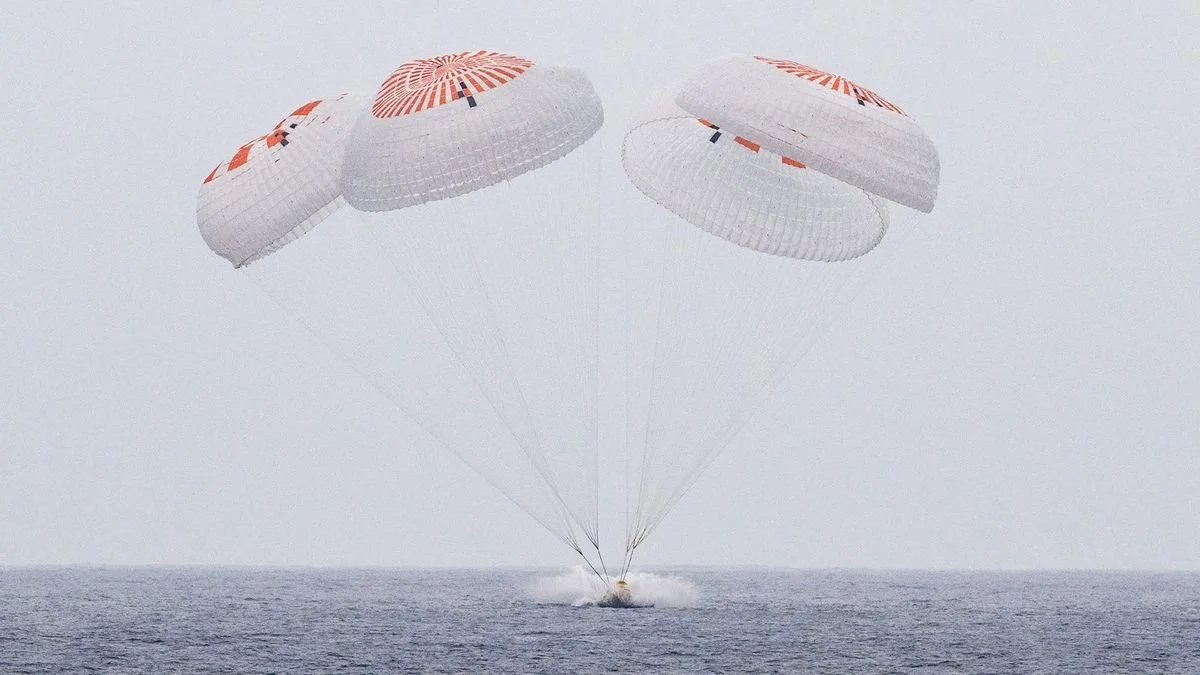
Crew-10 Safely Returns After Five Months in Space
Crew-10 Safely Returns After Five Months in Space
Written by: Keya Gambhir
Four astronauts are safely back on Earth after nearly five months aboard the International Space Station (ISS), marking SpaceX’s third Pacific splashdown with people on board and NASA’s first Pacific crew recovery in 50 years. Their SpaceX Dragon capsule parachuted into the Pacific Ocean off Southern California on Saturday, August 9, 2025, about 17 hours after undocking from the station.
Mission Background and Unexpected Role
The Crew-10 team included NASA astronauts Anne McClain and Nichole Ayers, Japan Aerospace Exploration Agency (JAXA) astronaut Takuya Onishi, and Roscosmos cosmonaut Kirill Peskov. They launched in March to replace two NASA astronauts stranded by Boeing’s Starliner test flight malfunctions. Butch Wilmore and Suni Williams, originally scheduled for just a week in orbit, remained aboard for more than nine months. NASA ordered Starliner to return empty and arranged for the pair to come home on a later SpaceX mission. Wilmore has since retired from NASA.
Crew Experience and Scientific Work
This was the first space mission for Ayers and Peskov, and the second for McClain and Onishi. During their mission, the crew carried out more than 200 science experiments. These included research into new materials, as well as studies on the physiological and psychological effects of spaceflight. The data gathered is intended to help prepare for human exploration beyond low-Earth orbit. They also conducted operational tests, performed station maintenance, and found time to enjoy life in microgravity.
NASA pilot Nichole Ayers reflected on the experience, saying, “We got to accomplish a lot of really amazing operational things. We got to see some amazing views, and we have had some really big belly laughs and a wonderful time together.” McClain, the Crew-10 commander, described the emotional impact of the journey. “All of us are keenly aware that we may never get to do this again. We’ve been very pensive over the last days of understanding what we have all got to be a part of.”
Re-entry and Landing
The return to Earth took the capsule through temperatures of about 3,000 degrees Fahrenheit as it pierced the atmosphere. The spacecraft splashed down under four parachutes in the Pacific Ocean. “Welcome home,” SpaceX Mission Control radioed moments after landing. McClain looked forward to “doing nothing for a couple of days” in Houston, while her crewmates spoke of wanting hot showers and juicy burgers.
Before departure from the ISS, McClain spoke about the broader significance of their work. She noted the “tumultuous times on Earth” and said she hoped the mission would serve as “a reminder of what people can do when we work together, when we explore together.”
Crew-11 Takes Over
A week before Crew-10’s return, their replacements arrived at the ISS. Crew-11 is composed of NASA astronauts Zena Cardman and Mike Fincke, JAXA’s Kimiya Yui, and Roscosmos cosmonaut Oleg Platonov. They will spend roughly six months aboard the station continuing science experiments and maintaining the orbiting laboratory.
Shift to Pacific Recoveries
The splashdown also highlighted a shift in SpaceX’s recovery operations from Florida to the Pacific Ocean. This change reduces the risk of debris over populated areas. Earlier this year, back-to-back private missions were the first to use the California recovery site. The last time NASA astronauts splashed down in the Pacific was during the Apollo-Soyuz mission in 1975, a Cold War cooperative project between the United States and the Soviet Union.
SpaceX and the Future of the ISS
This mission was SpaceX’s twelfth crewed launch to the ISS since 2020 under NASA’s Commercial Crew Program. The program ended U.S. reliance on Russian Soyuz spacecraft for astronaut transportation after the 2011 retirement of the Space Shuttle. The ISS has maintained a continuous human presence since October 31, 2000. However, NASA and its partners plan to retire the station by the end of the decade. NASA hopes that private companies will operate new space stations that can host astronauts in the future.
References
Byrne, Brendan. 2025. “4 People and 5 Months in Space, NASA’s Crew-10 Mission Safely Returns to Earth.” NPR, August 9, 2025, 11:34 AM ET. https://www.npr.org/2025/08/09/nx-s1-5493422/nasa-crew-10-iss-space-station.
Dunn, Marcia. 2025. “Astronauts Return to Earth with SpaceX after 5 Months at the International Space Station.” Associated Press, August 9, 2025. https://apnews.com/article/spacex-returns-astronauts-to-earth-with-pacific-splashdown-faa6d5c867de9d9c91f4ca6727da538c.
Wall, Mike. 2025. “SpaceX’s Crew-10 Astronauts Return to Earth after Nearly 5 Months in Space.” Space.com, updated August 9, 2025. https://www.space.com/space-exploration/international-space-station/spacex-crew-10-astronauts-return-to-earth-from-international-space-station.
